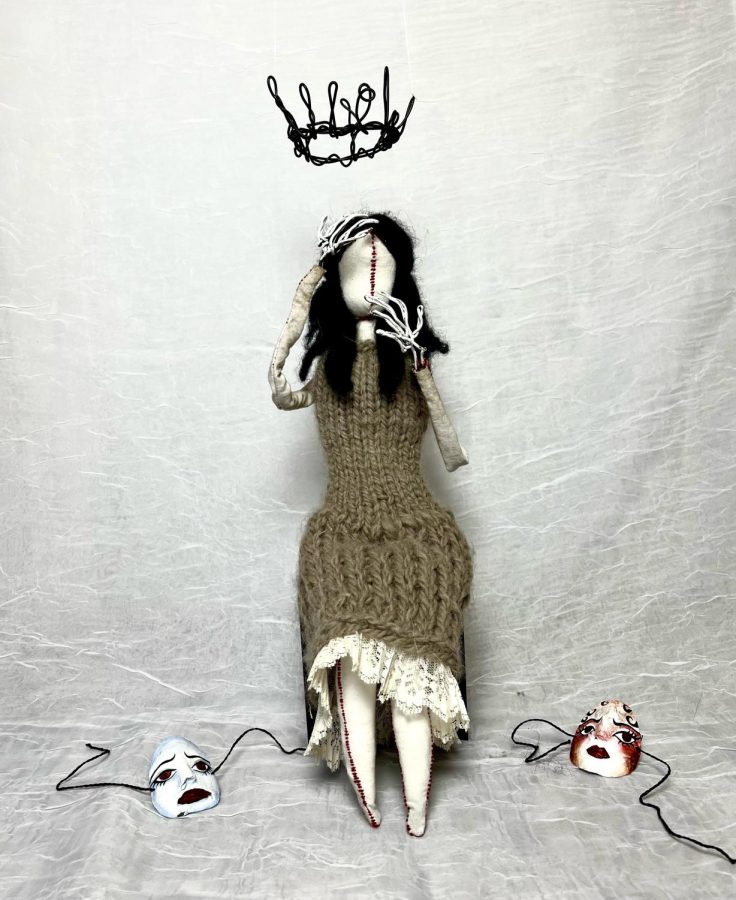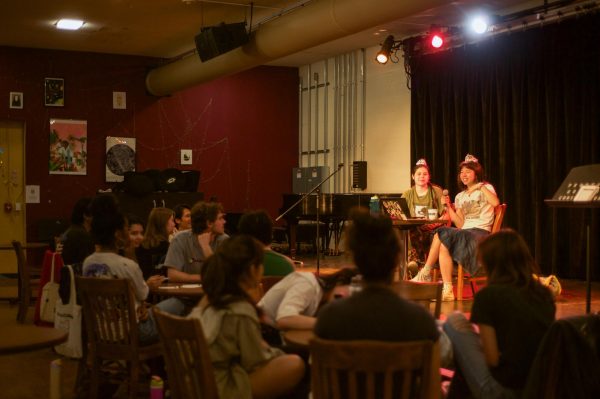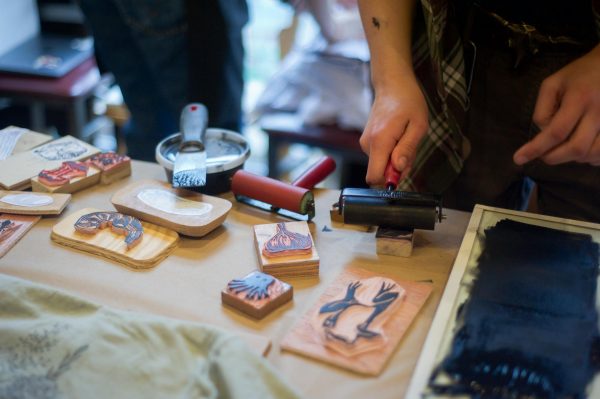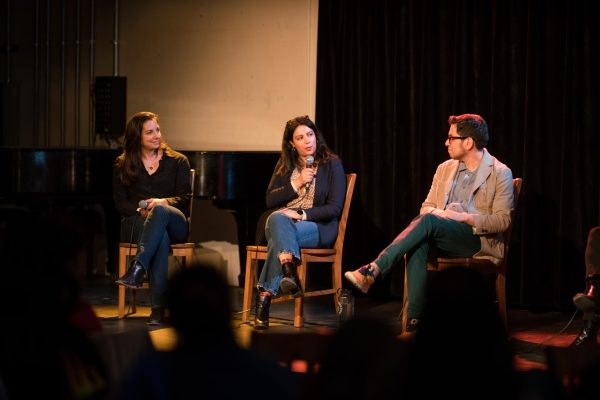Winter Term Offers Opportunities for Unique Experiences
Fae Ordaz’s stop motion animation features a handmade Melpomene figurine.
Winter Term is a unique annual opportunity for Oberlin students to dig deep into an area of specific personal interest. At no other point in the academic year are students given as much freedom — or faced with as much daunting possibility — as they are during Winter Term.
Although many students choose to take part in College-organized group projects, others go the independent route and devise a project of their own to carry out under the advice of a faculty sponsor. I talked with three artistically-inclined students about their plans for Winter Term and their personal processes of developing their ideas into fleshed-out plans of action.
First-year double-degree student Fae Ordaz plans to continue developing a multimedia project that she began working on in high school. Inspired by the folk opera Hadestown, which chronicles the story of Orpheus and Eurydice, she set out to create a mythological retelling of her own. Along with her best friend, she invented an origin story for the Greek muse Melpomene, the muse of tragedy. Ordaz spent the summer crafting a manipulable Melpomene doll out of fabric, wire, felt, knit yarn, and papier-mâché, then recording a stop-motion animation of the backstory she invented.
“The stop-motion is super visual, and when I show it to people they kind of make up their own interpretation,” Ordaz said. “For Winter Term, I’m planning on finishing some of the loose ends of the stop-motion and editing it to make it a little bit more concise.”
Ordaz also plans to spend her time creating music for the piece. A double major in Jazz Voice and TIMARA, she’s interested in fusing musical styles to produce a score that compliments the somewhat disorienting, abstract atmosphere of the short film. She views this project as an opportunity to push herself creatively in new ways.
“In the past, my compositions have been more like structured songs,” Ordaz said. “For this piece, I want a less structured composition — something more spacious. That’s harder for me.”
Ordaz wants to implement what she’s learned in her electroacoustic music course — taught by her advisor and Winter Term sponsor, TIMARA Chair Tom Lopez, OC ’89, — about crafting sparse but impactful soundscapes and challenging herself to “not overcomplicate” the production process. She hopes to use the unique textures of sound that she finds in the winter landscape of her hometown of Santa Fe, NM to shape the score she creates.
“I definitely want to do a lot of field recordings,” Ordaz said. “I think the wintertime will be a perfect time to get some gorgeous sounds out of the landscape, and I think it’s a perfect time for this piece because the sounds of nature — like the water flowing in the river — will be more muted and dark, which definitely fits the theme of this piece.”
College first-year and intended Studio Art major Ever Hyman is also planning on delving into a creative project over Winter Term, and her proposal involves an element of spiritual exploration. Instead of having one main focus, her project is made up of a range of parts: daily meditation, original artworks, visits to various religious and spiritual sites of worship, interviews with people from her life who have shaped her religious outlook — all chronicled in a spoofy video diary.
“I decided that this Winter Term, I’m basically just gonna try to reinvent God for myself,” Hyman said. “I’m gonna go on this little spiritual journey for a month.”
Hyman admitted that the goal of “reinventing God” was a lofty one, but she emphasized that her intention was to make space in her life for the kind of inward spiritual contemplation that is often impossible in a college environment. She hopes to use the academic reprieve of Winter Term to allow herself the time and focused attention necessary to cultivate this spiritual sphere of her life.
“Basically, the things I’m gonna be doing are like little challenges to myself to get closer to the higher power,” Hyman said. “I don’t even know if that exists. I’m gonna try to see for myself if there is some sort of cosmic order to things, then I’m gonna return back to these people who have helped me, interview them, and essentially just ask for spiritual advice.”
Hyman wants to use art-making as a tool for developing her self-knowledge, reflecting on her spiritual beliefs, and recording the whole adventure.
“I’m looking to see this month actualized into an object,” Hyman said. “Like, being able to look at a photograph of these internal experiences. I think it’ll be really interesting to put what’s inside outside. This is a great opportunity — I have one month to just vibe out and get swept up in the internal whirlwind.”
Finally, third-year Studio Art major Martina Taylor is planning to travel to Budapest during Winter Term to work on a project involving in-depth research on Hungarian textiles, specifically pártas, ornate headpieces worn on special occasions by young, unmarried girls. Taylor sought to propose a project that combined making art and strengthening her connection to her family and her identity, and she was able to obtain funding for her project via a grant from Oberlin’s Center for Russian, East European, and Central Asian Studies.
With help from her advisor and sponsor, Associate Professor of Studio Art, Reproducible Media, and OCREECAS Director Kristina Paabus, Taylor devised a plan to use Budapest as her classroom for learning about traditional Hungarian embroidery and textile dying techniques while also conducting ethnographic research on the lives of queer Hungarians, all culminating in the construction of her own, distinctly queer version of the párta.
“I’m queer,” Taylor said. “My dad, my sister, and my stepparent are too.They’re Americans who immigrated to Hungary, so it’s been interesting hearing about their experiences … I want to learn more about that [queer] community in Hungary … Traditionally, pártas are supposed to signify a woman’s marital status or her virginity, but at the end of my project, I’m going to create a reimagined párta that reflects Budapest’s queer history.”
Wherever your interests lie, Winter Term is your sandbox for exploring them. Avant-garde, mythology-inspired stop motion films? Spiritual epiphanies? Queer Hungarian textiles? With the right amount of imagination, funding, and faculty support, a “personal project” can take any conceivable form.









